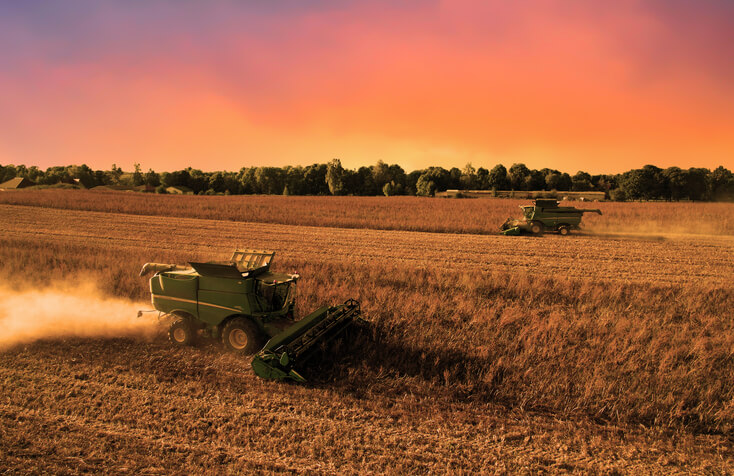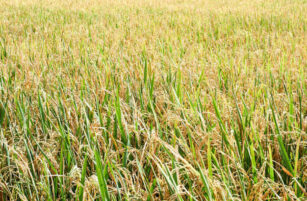Insight Focus
We continue to assess what makes a ‘good’ or ‘bad’ crop. This week, we’ll take a look at wheat storage and the factors that can lead to an excellent crop or a disaster.
The Growing and Harvest
As we discussed in Part 1, even for the very best of farmers, the vagaries of weather have the final say on the wheat crop that makes it to the store.
Timing is critical to achieve optimum yield and quality for the wheat crop. That starts with seed bed preparation and extends all the way through to final harvest and seeing the wheat into store.
The Importance of The Storekeeper
Having spent many months painstakingly caring and nourishing a crop, it is staggering how often inadequate attention to detail in the store can destroy an excellent, well-grown wheat crop.

Source: iStock
Once a good quality milling wheat crop has been harvested, it is critical that it is well conditioned and stored. It should be:
- Cleaned for a low admixture, uniform sample;
- Dried carefully to preserve the gluten and Hagberg;
- Cooled to maintain condition and quality for the weeks or months ahead; and
- Prevented from exposure to moisture or temperature rises in store
Smell, mould, weevils, mycotoxins and sprouting will all look to rear their heads and destroy the farmer’s year of hard work.
The Initial Assessment
As wheat is trailered off the fields into store it is essential that the store operator knows what he might be receiving, together with thoughts on the wheat’s potential destination.

Source: iStock
Each field will have its own unique characteristics defining the intended use for that parcel of grain. This will depend upon a multitude of factors, including:
- Variety of wheat sown;
- Soil type of the field;
- Fertiliser and spray applications throughout the growth cycles;
- Weather from planting to harvest; and
- Any sales already made or otherwise in mind for the individuality of the parcel.
Knowing your final objective is a good place to start in assessing how you treat the wheat grains once tipped into the intake pit of your store.
The Trained Assessor
An initial look at the grains, by a well-trained eye, will give clues as to wheat quality.

Source: iStock
Farm stores will generally have simple testing equipment to analyse the basics of moisture and perhaps grain size (specific/bushel weight).
The bigger commercial stores will have all that they need to test a much fuller range of milling qualities, including:
- Moisture (%)
- Specific/bushel weight (Kg/hl)
- Admixture (%)
- Protein levels (%)
- Hagberg falling numbers (seconds)
The greater the understanding of quality at this stage is of increasing importance the higher the grade of wheat and intentions for its use.
Cleaning
Wheat needs cleaning to take out as much of the unwanted admixture as possible.

Source: iStock
Any weed seeds can be green and potentially disastrous when longer term storage is needed. Chaff, bits of straw and other debris need to be extracted as far as possible.
The use of the good sieves and fan extractors will provide the most consistent, uniform and clean samples to take through the remaining processes.
Drying and Cooling
The importance of getting these stages right cannot be underestimated, especially for higher quality milling wheat.

Source: iStock
Wheat needs to be dried primarily to adhere to the grain contract when moved, most likely circa 15% maximum moisture. Nonetheless, drying to these levels is critical if grain is to be stored for several months prior to onward delivery to mills.
In the case of milling wheat quality, adequate levels of Hagberg and gluten are required. Both of which can be destroyed by drying too quickly at too high a temperature.
Inevitably the pressures on a grain store operator at harvest time can be great. This is where calm heads are needed to allow the careful drying and cooling of grains, in some cases with multiple passes through the system. A failure in the drying process can be ruinous to grains that a farmer has spent months nurturing to this point.
Once dried, grains need to be cooled as far as possible prior to entering their longer-term store.
Storing Wheat
Wheat may need to be stored for many months prior to moving on to a further processor, feed or flour mill.

Source: iStock
As a result, it is important to maintain the wheat in its best condition. This means it should be clean, carefully dried and then cooled for easiest storage.
The cooling process can often be a headache for a storekeeper. With high ambient temperatures during the summer, often running into the autumn, it can be a trying time as storekeepers endeavour to blow the coolest air possible through large piles of grain.
Blowing air through grain during cool, dry nights is ideal, although not always as easy as it seems. The need for this to be done as swiftly as possible post-harvest cannot be overstated to maintain quality.
The demons for a storekeeper are that:
- Warm wheat becomes damp wheat
- Warm, damp wheat is perfect for grain mites and grain weevils
- Grain weevils are extraordinarily prolific breeders who devour wheat grains













